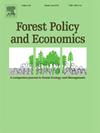森林损失对美国东南部饮用水处理成本的潜在影响
IF 3.8
2区 农林科学
Q1 ECONOMICS
引用次数: 0
摘要
以前的研究表明,森林保护可以保护水质,但不太清楚森林保护对饮用水公用事业的净经济成本是多少。森林对饮用水的效益的经济评价是复杂的,部分原因是潜在的经济效益通过森林对水质的效益间接与森林保护有关。我们通过将与森林覆盖和水质变化相关的生态生产和经济评估功能联系起来,为越来越多的关于土地利用-水质相互作用的文献做出了贡献。我们通过分析预计土地利用变化对水质的影响,利用养分浓度的变化来估计潜在的避免饮用水处理成本。具体来说,我们使用在美国东南部进行的一项调查的观察结果来探索影响报告治疗费用变化的因素。然后,我们将原始数据与详细生态生产函数的模拟输出相结合,以预测该地区土地利用变化(包括森林损失)的潜在长期成本影响。我们的研究结果表明,浊度和TOC降低1%将使处理成本分别降低0.046% - 0.091%和0.951% - 1.144%。此外,虽然我们发现在潜在的未来土地利用变化下,总体净成本影响不大(大多数设施为10%),但我们发现森林损失1%可能会使处理成本增加1.7%。这些结果突出了供水系统中森林保护的潜在经济价值,并可以通过森林管理激励措施为供水公司的水源保护战略提供信息。关键词:森林损失,水处理成本,水质。本文章由计算机程序翻译,如有差异,请以英文原文为准。
The potential impact of forest loss on drinking water treatment costs in the southeastern U.S.
Previous research shows that forest preservation can protect water quality, but it is less clear what the net economic costs of forest preservation might be for drinking water utilities. Economic valuation of forest benefits for drinking water is complex in part because the potential economic benefit is indirectly related to forest preservation through the benefit of forests for water quality. We contribute to a growing literature on land use-water quality interactions by linking ecological production and economic valuation functions that relate to changes in forest cover and water quality. We estimate potential avoided drinking water treatment costs by analyzing water quality impacts of projected land use change, using changes in nutrient concentrations. Specifically, we use observations from a survey conducted in the Southeastern US to explore which factors influence the variation in reported treatment costs. We then integrate the primary data with simulated outputs from a detailed ecological production function to project the potential long-term cost implications of land use change (including forest loss) in the region. Our findings suggest that a 1 % reduction in turbidity and TOC would reduce treatment costs by 0.046 %–0.091 % and 0.951 %–1.144 %, respectively. Further, while we find evidence of modest net cost impacts overall (<10 % for most facilities) under potential future land use change, we find a 1 % forest loss could increase treatment costs by 1.7 %. These results highlight the potential economic value of forest preservation in water supply systems and could inform source water protection strategies by water utilities through forest management incentives. Keywords: Forest Loss, Water treatment costs, Water quality.
求助全文
通过发布文献求助,成功后即可免费获取论文全文。
去求助
来源期刊

Forest Policy and Economics
农林科学-林学
CiteScore
9.00
自引率
7.50%
发文量
148
审稿时长
21.9 weeks
期刊介绍:
Forest Policy and Economics is a leading scientific journal that publishes peer-reviewed policy and economics research relating to forests, forested landscapes, forest-related industries, and other forest-relevant land uses. It also welcomes contributions from other social sciences and humanities perspectives that make clear theoretical, conceptual and methodological contributions to the existing state-of-the-art literature on forests and related land use systems. These disciplines include, but are not limited to, sociology, anthropology, human geography, history, jurisprudence, planning, development studies, and psychology research on forests. Forest Policy and Economics is global in scope and publishes multiple article types of high scientific standard. Acceptance for publication is subject to a double-blind peer-review process.
 求助内容:
求助内容: 应助结果提醒方式:
应助结果提醒方式:


